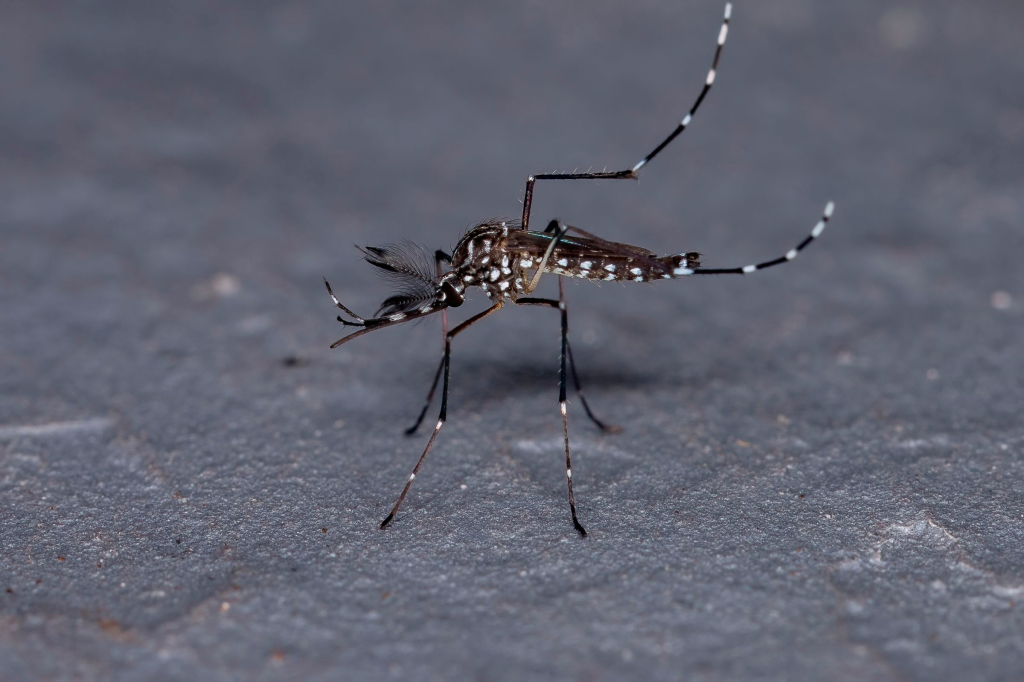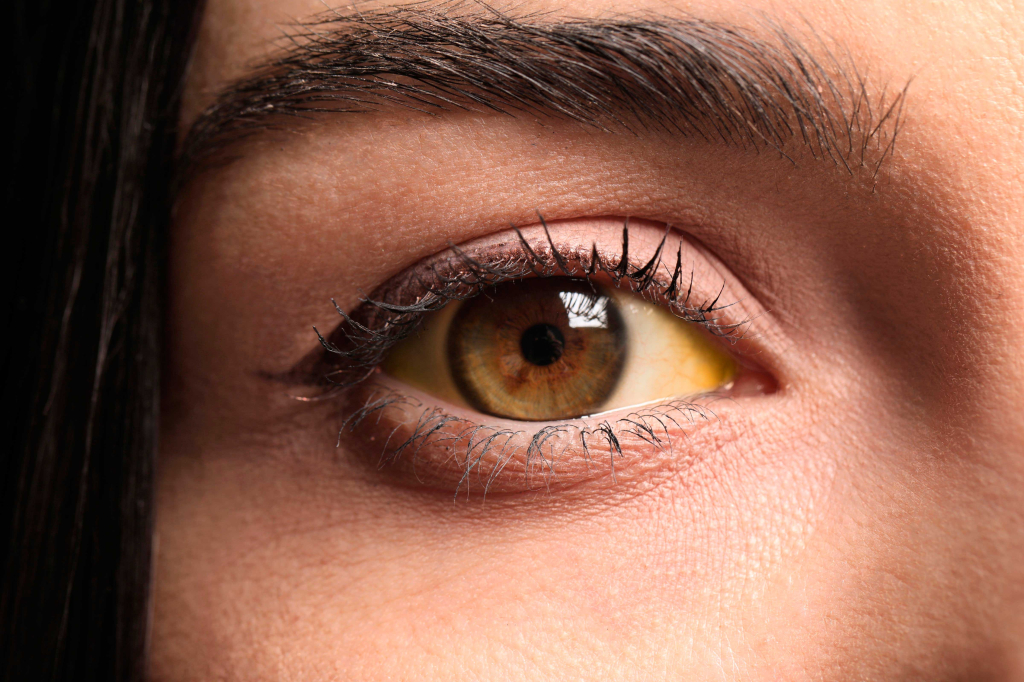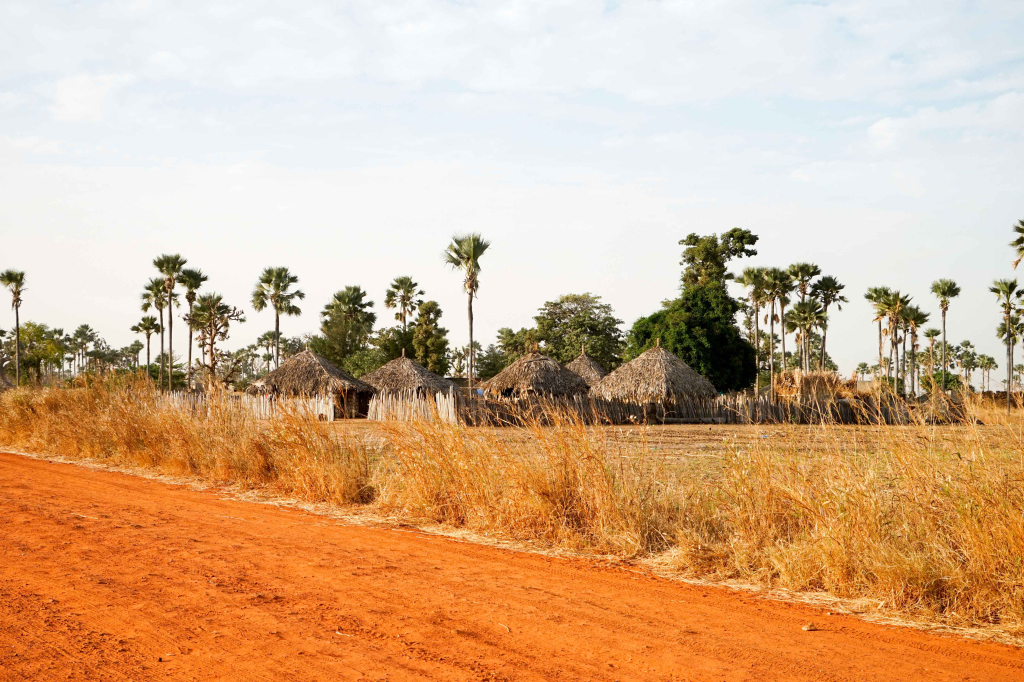Yellow fever often provokes anxiety in tourists planning a trip to Africa. What causes this disease and how severe is it? How can you avoid it, and is there a vaccine? Is all of Africa at risk, and is yellow fever present in other parts of the world too? We’ve compiled all the key information about yellow fever for you in this article.
What is yellow fever?
Yellow fever is an acute viral disease common in some countries of Africa and South America. The yellow fever virus is transmitted through the bites of a certain species of mosquito infected with this virus. It is called yellow fever because in rare cases the disease causes yellowing of the skin (jaundice).
Yellow fever causes a lot of fear, but actually, it is very rare for travelers to get it. The virus affects people in countries where the disease is endemic. According to WHO, there are 47 such countries. It is important to know that 90% of all yellow fever cases occur on the African continent south of the Sahara, namely in West and Central Africa.
Such regionality of the disease is explained by the source of the virus, or rather, by the creatures who carry the virus. Those are mosquitoes of the species Aedes aegypti with white dots and stripes on their bodies, which are also called yellow-fever mosquitoes. These little insects carry many pathogens: more than 50 kinds of viruses and a couple of parasites dangerous to animals. In South and Central America, there are also mosquitoes of several species in the Haemagogus genus that can transmit yellow fever.
The yellow-fever mosquitoes originated in Africa but were introduced to South and Central America during the slave trade period. There is a related species of mosquito in Asia, but it does not transmit yellow fever. What is worrying is that with global warming, vector mosquitoes are expanding their range, and there are already known sightings of these insects in the United States and on the approaches to Europe: in Turkey and in the south of France. This is another negative impact of global climate change.
Since 2017, the “Eliminate yellow fever epidemics (EYE) strategy” has been in effect around the world. It is coordinated by the World Health Organization, the UN Children's Fund UNICEF, and the Global Alliance for Vaccines and Immunization. The goal of this association of forty countries is to monitor cases of yellow fever and respond to outbreaks in time to prevent the disease from spreading around the world.
Yellow fever symptoms
In order to detect the disease quickly, you need to be able to diagnose it, preferably as early as possible. But with yellow fever, it's not that simple. Most people who have been bitten by an infected mosquito, do not even notice any signs of the disease and recover fairly quickly without consequences. By the way, having had yellow fever once, you can never fear it again - immunity against it is formed once and for all.
The disease can manifest itself more noticeably too. But it often begins with mild symptoms, which also makes it difficult to diagnose.
The mild form of the disease
If symptoms occur, it typically happens 3 to 6 days after contact with the virus. The initial symptoms of yellow fever include fever, headache, back pain and general muscle pain throughout the body, weakness and rapid fatigue, loss of appetite, and in some cases, nausea and vomiting may appear. With such general symptoms, it is difficult to understand what is going on with the body.
Sometimes, a blood test can help to identify yellow fever. But in most cases, it doesn't come to this, because the disease recedes. Most often, a person completely recovers in a week, or even faster, in 3-4 days. However, in some patients, the process drags on, and then a feeling of fatigue may haunt you for a few more months, and yet, eventually, the body successfully deals with the virus on its own.
But the insidiousness of yellow fever lies in the fact that in a small proportion of those who get infected, there is a feeling of recovery on the first day, and all the initial symptoms appear to recede, but then comes a sharp deterioration.
The severe form of yellow fever
In about 15% of cases, after the disappearance of mild symptoms, the full brunt of the disease suddenly falls upon the infected. The temperature rises sharply again, abdominal pain appears, and sometimes jaundice is also present - skin and eye whites become yellow in color. At this point, internal organs, most often the liver and kidneys, are affected, and this becomes clear from darkened urine.
But the most unpleasant thing that can happen is internal bleeding. Symptoms of this process are the release of blood both from the head orifices - from the mouth, nose, eyes, or ears - and blood present in the feces. Internal organ systems go into shock, and often the body can't cope. The U.S. CDC estimates that 30% to 60% of people who are unlucky enough to have yellow fever progress to the severe stage die.
What is the cause of yellow fever?
What causes this tropical disease? Its causative agent is a virus called Viscerophilus tropicus. It is one of 53 flaviviruses that affect birds and mammals, including humans. All flaviviruses are transmitted by either mosquitoes or ticks. While these viruses are responsible for a variety of diseases around the world, they were named after yellow fever - the Latin word flavus means "yellow."
This virus circulates in primate populations. Since humans are one of the primate species, it also affects us. For the virus to be transmitted from one human to another, you need vectors, and this role is played by mosquitoes. In addition to the already-named and most common Aedes aegypti, there are other species, such as Aedes africanus, and several species native to South America that can carry the virus. They do not belong to the genus Aedes, but to the genera Haemagogus and Sabethes, and pose a danger to non-human primates.
It is the female Aedes aegypti mosquito specifically that carries the virus. When they suck the blood of an infected person or monkey, they get the yellow fever virus and transmit it in their saliva to their next victim. The mosquitoes can also transmit it to their larvae, and then, growing up, mosquitoes become carriers of the virus from birth.
The virus cannot be directly transmitted from person to person, or between monkeys and humans. So it makes no sense to be afraid of people carrying yellow fever.
The yellow fever virus has three cycles of transmission. You may have seen this classification: jungle (sylvatic), intermediate (savannah), and urban. Each is so named for the type of area in which it spreads.
Yellow fever in the jungle cycle is transmitted between monkeys living in humid rainforests. People can become infected if they have to work in the jungle. This mode of yellow fever infection is the only one in South America, hence only 10% of the world’s yellow fever cases are recorded on that continent.

Urban yellow fever begins with people who become infected in the jungle area coming to cities with high population densities. Here, mosquitoes of the genera Aedes and Haemagogus quickly transmit the virus from infected humans to other people. This results in yellow fever outbreaks in Africa. Savannah yellow fever, also called intermediate yellow fever, is found on the same continent too. This is the most common cycle, with people and monkeys in rural areas often coming into contact with infected mosquitoes that breed both in the wild and near homes.
Incidentally, people themselves provoke the breeding of mosquitoes near their homes, thereby increasing the risk of pathogen transmission. Mosquitoes' favorite habitat is stagnant water, near which female mosquitos lay their larvae. To avoid that, water should be either flowing or periodically changed. Any bodies of stagnant water, natural or artificial, are dangerous in that regard, including water containers and random objects where rainwater can accumulate: cans, tires, and other household waste.
Who is at risk for yellow fever?
People in West and Central Africa are primarily at risk. Because of the lack of high-quality statistics in some of these countries, there are no accurate figures or a clear picture of yellow fever prevalence. WHO staff have to run simulations and base their data on them. For example, they show that 84,000-170,000 Africans could have been diagnosed with the severe form of the disease in 2013, and 29,000-60,000 could have died.
Countries with a high risk of infection throughout include Cape Verde, Senegal, Guinea-Bissau, Gambia, Guinea, Sierra Leone, Liberia, Ivory Coast, Burkina Faso, Ghana, Togo, Benin, Nigeria, Cameroon, Equatorial Guinea, Gabon, Republic of Congo, Democratic Republic of Congo, Sao Tome and Principe, Angola, Central African Republic, South Sudan, Uganda, and Burundi. There are also a few countries where the danger of infection is present only in some regions. These are Mauritania, Mali, Niger, Chad, Sudan, Ethiopia, and Kenya. Before traveling to any of these countries, the U.S. CDC recommends that you get vaccinated against yellow fever.

There are several neighboring countries where yellow fever is not present, and local health ministries are taking measures to ensure that it does not occur there, such as requiring vaccination certificates at entry from citizens of endemic countries and tourists who have transited through them for a long time. If you fly into these countries directly, there are no recommendations to be vaccinated. But just in case, you should know them: Eritrea, Djibouti, Somalia, Rwanda, Tanzania, and Zambia.
As for the countries of the South American continent and surrounding regions, the risk group includes residents of Panama, Colombia, Ecuador, Peru, Bolivia, Paraguay, Argentina, Brazil, Venezuela, Trinidad and Tobago, Guyana, Suriname, and French Guiana. Vaccination is also recommended for travelers to all of these countries. But it is worth remembering that not all regions of these countries are infested with infectious mosquitoes. For example, in Argentina, the risk of infection is present only in a small region in the north of the country.
150-350 years ago, yellow fever was predominantly a disease of sailors called “Yellow Jack” or “black vomit”. Occasionally it was reaching North America and Europe, causing outbreaks. At that time, the causes of the disease were not yet understood. The fact that it was viral and the pathogen was carried by mosquitoes was not understood by doctors until the second half of the 19th century. Now the fight against yellow fever is carried out both at the national and global levels. This mainly refers to the prevention of the disease.
How yellow fever is treated?
Unfortunately, there are no known treatments for diseases caused by flaviviruses, and yellow fever is no exception. There are no drugs or medical treatments against it. The same applies to tick-borne encephalitis, Japanese encephalitis, dengue fever, and West Nile fever.
If the condition worsens, patients can be hospitalized. The doctors will help the body fight the virus by providing symptomatic treatment. Interventions are often helpful in addressing fever, dehydration, liver and kidney failure, and severe pain. People with yellow fever are advised to rest and drink plenty of fluids.
Prevention is considered the most effective way to avoid yellow fever.
How to prevent yellow fever?
Here we will not discuss in detail the measures taken by countries and international organizations. They include national vaccination programs and vector mosquito control. These methods are effective in countries that can afford to spend substantial amounts of money on health care. Many African countries, on the other hand, need outside help, so travelers would be better served by taking individual preventive measures.
Vaccine
The surest way to be safe is to get a yellow fever vaccine. It was developed back in 1937 based on a weakened strain of the virus. This vaccine is considered safe, with mild side effects. It is also quite accessible and inexpensive.
The shot is given into the deltoid muscle of the shoulder. The drug begins to interact with the immune system, and after 10 days a stable resistance to the pathogen is developed. It is after this period that the vaccination certificate is considered valid and remains so for the rest of your life. One dose forms lifelong immunity.
Vaccination is recommended for anyone traveling to countries endemic for yellow fever. Non-indigenous populations in tropical Africa and South America are thought to be more likely to experience a severe form of the disease when confronted with yellow fever than the natives of those regions.
Protection against mosquito bites
Both the WHO and the U.S. CDC consider preventative measures to be very effective
Against mosquito-borne illnesses. It’s easy to take those measures for anyone who travels to at-risk areas.
Prevention measures include:
-
Use of insect repellents;
-
Wearing pants and clothing with long sleeves;
-
staying in hotels with nets on windows or with air conditioning;
-
using mosquito nets over the bed while sleeping.
Mosquitoes usually fly out to hunt in the evening and at night. But Aedes aegypti are also active during the day. So you need to protect yourself at all times.
Effective against insects are substances that contain DEET (diethyltoluamide), icaridin (picaridin), lemon eucalyptus essential oil, paramentandiol or 2-undecanone, and IR3535. These products will repel any ticks and mosquitoes in any region of the world. If you use sunscreen at the same time, spray the exposed skin with repellent over the applied cream.
Pants and socks, as well as outerwear with long sleeves in most cases create a protective layer. But mosquitos can bite through the thin fabric, so it's better to spray permethrin on your clothes. This insecticide is good because when applied to clothing, it continues to work even after several washes. The main thing to remember is not to apply it to your own skin.
You can also treat mosquito nets with permethrin. Nets are very common in Africa, they are present in almost every hotel. In some places, they are fixed on the ceiling above the bed, and sometimes a more elegant solution is designed in the form of a canopy. You can buy your own mosquito net and travel with it, not worrying about the unknown conditions of the accommodation in advance. When choosing a net, focus on these guidelines: it should be compact, white, and rectangular, with 156 holes per square inch.
10 facts about yellow fever
To summarize, let's list the top 10 facts about this tropical disease.
- 1. Yellow fever is caused by a virus that can be transmitted by infected female mosquitoes of some species. Humans and other primates are susceptible to this disease. The virus is not transmitted from person to person.
- 2. The yellow fever vaccine is a single shot offering lifelong protection. The shot is given in the shoulder. Immunity develops in 10 days and lasts a lifetime.
- 3. The disease is common only in some countries in Africa and South America.
- 4. When infected with yellow fever, in 90% of cases humans do not suffer serious complications. Most people fully recover in 3-4 days.
- 5. The first symptoms of yellow fever are fever, headache, muscle pain, loss of appetite, vomiting, and a general feeling of weakness. These symptoms may appear 3 to 6 days after infection.
- 6. Jaundice with yellowing of the skin and eyes; bleeding from the nose, mouth, eyes, or ears; vomiting blood; and blood in the stool are considered serious symptoms. These occur in about 15% of cases. As a rule, up to half of the people who develop the disease further into the severe phase die within a week.
- 7. In addition to vaccination, excellent prevention measures include vector control and self-protection: the elimination of potentially dangerous mosquito species through government programs, as well as the use of repellents, nets on windows, mosquito nets over beds, and wearing clothes that cover arms and legs.
- 8. Residents of 47 countries in Africa, as well as in South and Central America are at risk.
- 9. States neighboring countries endemic for yellow fever require a certificate of vaccination.
- 10. Travelers from non-endemic countries very rarely get yellow fever.
All content on Altezza Travel is created with expert insights and thorough research, in line with our Editorial Policy.
Want to know more about Tanzania adventures?
Get in touch with our team! We've explored all the top destinations across Tanzania. Our Kilimanjaro-based adventure consultants are ready to share tips and help you plan your unforgettable journey.

























